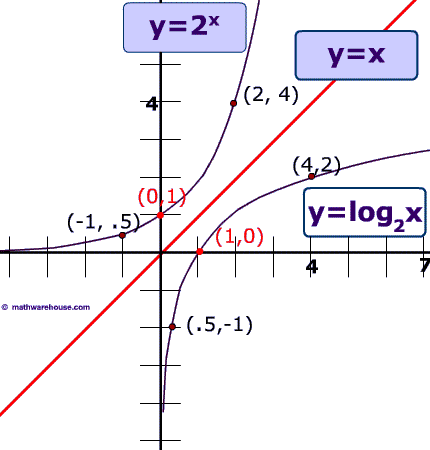Table of Contents
Definition of a logarithm
If
and there is a constant
, then
, then if and only if
In the equation
, y is referred to as the logarithm, b is the base, and x is the argument.
The notation is read “the logarithm (or log) base b of x .” The definition of a logarithm indicates that a logarithm is an exponent
is the logarithmic form of
is the exponential form of
Example
1 Write each equation in its exponential form.
- a.
b.c.
- a.
2 Write the following in its logarithmic form:
Solution:
Use the definition
if and only if
(a)
if and only if
(b).
if and only if
(c)
if and only if
- Use the definition
if and only if

EQUALITY OF EXPONENTS THEOREM
If b is a positive real number
such that
Example:
evaluate
Solution: Use the definition
if and only if
if and only if
⇒
⇒ Thus, by Equality of Exponents,
PROPERTIES OF LOGARITHMS
If b, a, and c are positive real numbers,
, and n is a real number, then:
- Product:
- Quotient:
- Power:
- Inverse 1:
- Inverse 2:
- One-to-one:
- Change of base:
Examples
- Use the properties of logarithms to rewrite each expression as a single logarithm:
(a)
(b)
- Use the properties of logarithms to express the following logarithms in terms of logarithms of x, y and z
(a)
(b)
Solutions: 1. Use the properties of logarithms to rewrite each expression as a single logarithm:
(a)
power property
product property
(b)
power property
quotient property
- Use the properties of logarithms to express the following logarithms in terms of logarithms of x, y and z
(a)
product property ⇒
(b)
quotient property
product property
power property
COMMON LOGS
A common logarithm has a base of 10. If there is no base given explicitly, it is common. You can easily find common logs of powers often. You can use your calculator to evaluate common logs.
NATURAL LOGS
A natural logarithm has a base of e. We write natural logarithms as ln. In other words,
.


